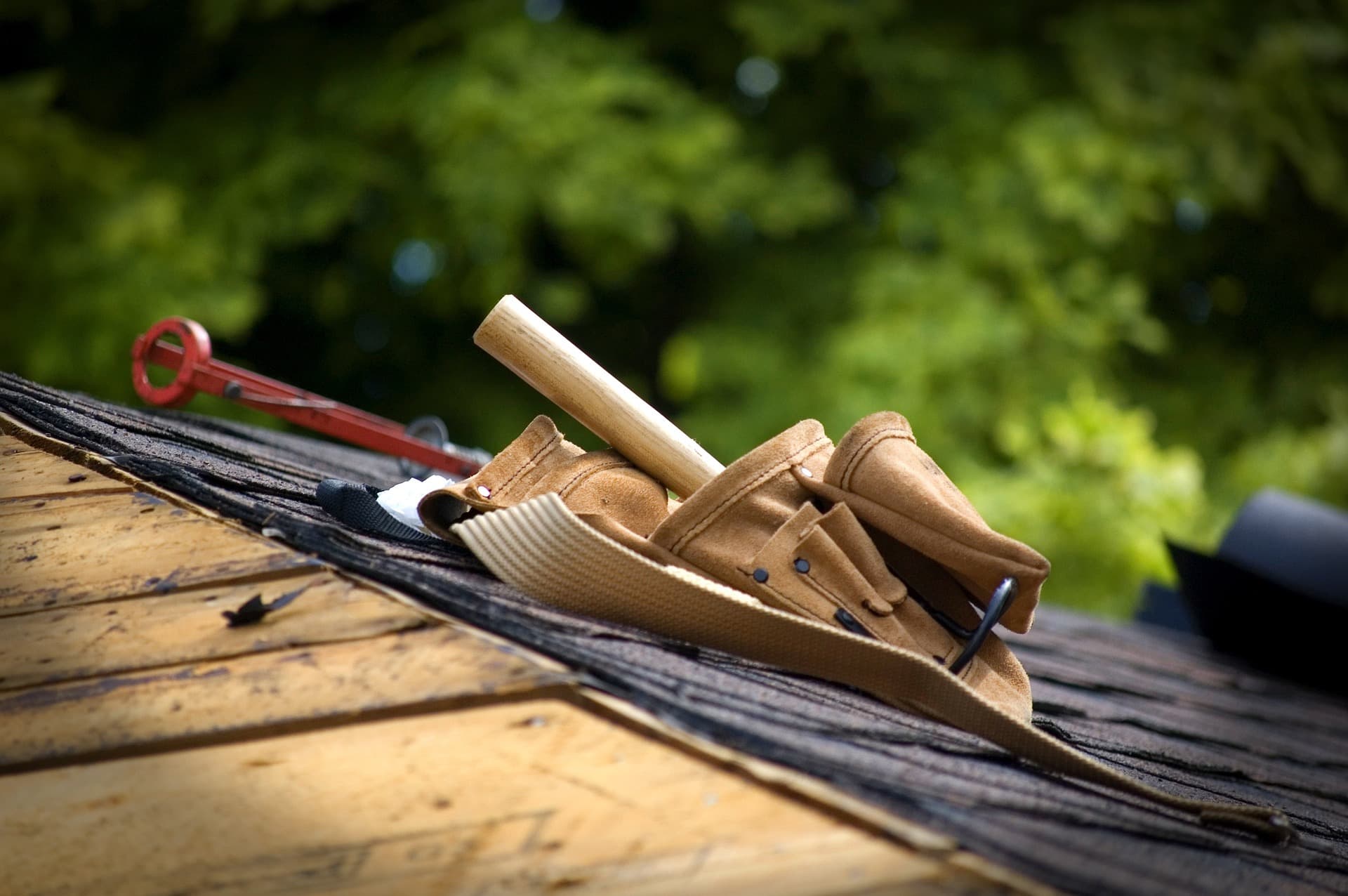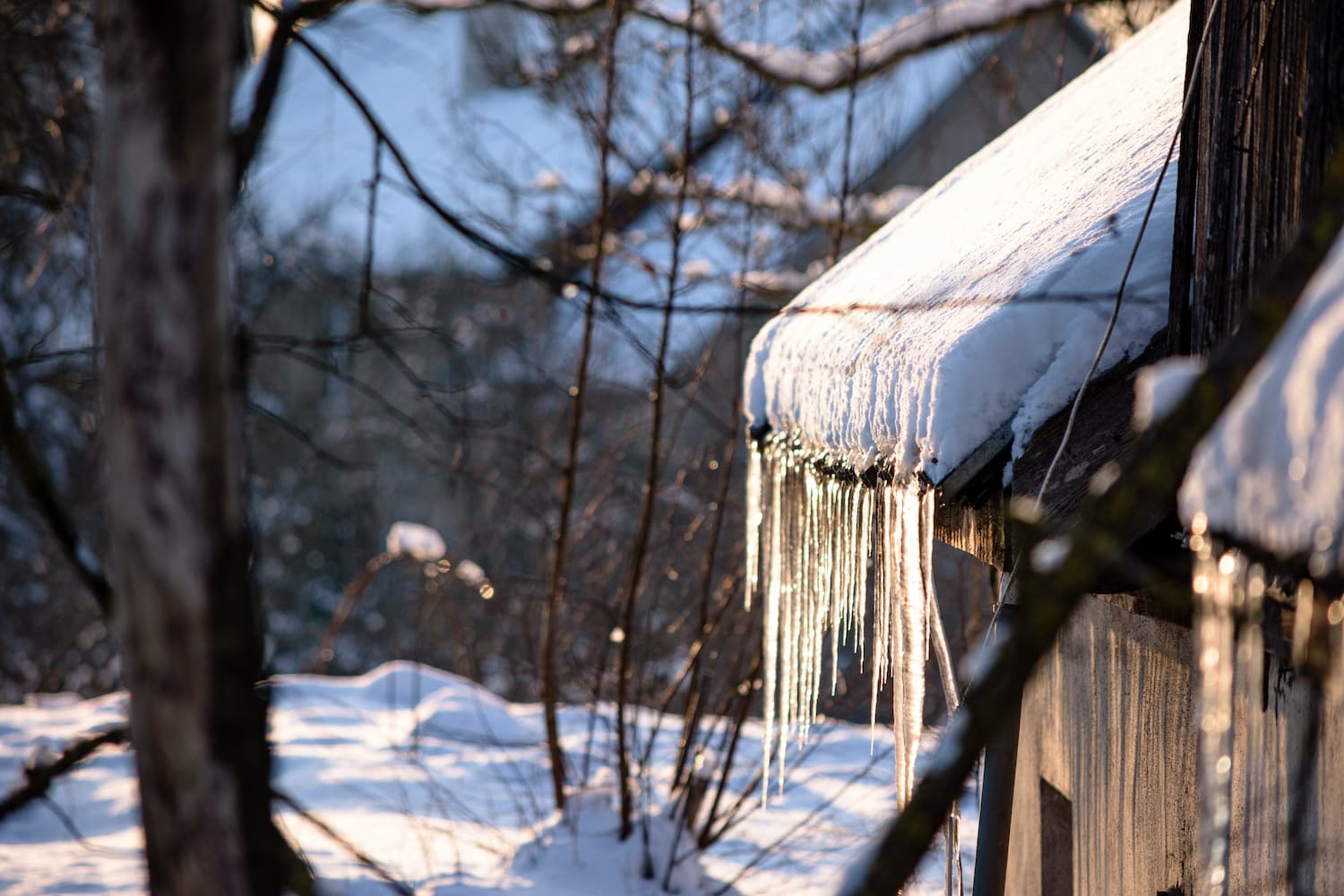
Spring is right around the corner. As we say goodbye to cozy nights cuddling by the fire and drinking hot chocolate, we welcome the warmth and renewal of life that spring brings with it. Of course, this gives way to a busy season of spring cleaning. Now is the time to go outside and check for any damages that winter may have done to your home, especially your roof.
As we all know, winters in Missouri can be quite unpredictable: “You really never know if you’ll have a warm sunny day or a snowstorm. More likely than not, you’ll get both in the same week!”
We have experienced then, during this winter season: freezing rain, floods, windy days, tons of snow, and an amount of water produced from snow melting that can cause water damage and leak into your home through any cracks. So if you didn’t prepare before, winter can be a brutal time for your home!
Here are the following steps you should take to make sure your roof is ready for spring:
1. Check the roof for damages
A lot can happen to a roof during winter. It is important to assess the damage as early as you can to avoid any costly repairs in the future. The most common damages being:
Snow Damage
Winter is a beautiful season that brings with it childhood nostalgia of snow angels and snowball fights. However, your roof may beg to differ. Snow can add burden to the roof as it piles up. Too much weight beyond the roof’s snow load rating can cause a portion of the roof to collapse.
A warm attic with improper ventilation also adds to the distress as it causes the ice to melt at the middle of the roof. Ice dams occur when there is a buildup of ice at the edge of the roof. As the ice melts and refreezes, the water expands and damages the shingles, opening cracks in the roof. It also damages the gutter as excessive ice buildup causes it to crack or pull away from the edge of the roof.
Water Damage
As winter gives way to spring, the ice that accumulated on your roof melts and leaks through thin cracks in the roof. This allows moisture to seep into the foundation. If left untreated, the repetitive cycle of melting and refreezing water can add cracks to the foundation of the house. Water damage causes rotting and threatens the structural integrity of your home. The excessive moisture also triggers the growth of mold and mildew, which can lead to serious health issues.
To see if your roof has been sustaining water damage, be on the lookout for any water spots or stains along the ceiling or walls of your house. Discolored roofs are also another indication of water damage. This should be done diligently every spring in order to catch any damages before it gets worse.
Wind Damage
Wind damage is the most common enemy of your roof as it affects your roof all year round. You can tell if your roof has sustained wind damage by checking to see if:
Loose or missing shingles
Curling on the edge of shingles
Splitting, tears, or cracks on the shingles
Bent gutter
Missing granules
2. Remove any foreign objects:
Debris can clog up your roof and make it more difficult to spot any damages right away, especially those that are not visible to the untrained eye. Make sure that you give the roof inspector a clean space in order for them to thoroughly inspect any damages that you may not have been aware of.
Make sure that your gutters are not clogged up with leaves and other debris. The gutter serves as your water’s flow of direction. As the ice melts, you need to guide the water away from your house. Clogged gutters lead to water backup, causing it to either sit on your roof or overflow. Either way, both can cause serious damages to your house. Water that is sitting on your roof will cause it to rot over time, giving way to leaks and structural problems in the ceiling. When water overflows from the edges, it can damage the foundation of your house and compromise its durability. Look out for granules found in the gutter, as this can be an indication that the roof is susceptible to leaking. It is important to keep the water away from your house at all times. Water damage works fast, so you have to be sure to catch it before it affects other parts of your home.
Check the attic for holes:
Make sure your attic is properly sealed off to prevent any leaks or holes caused by wind and water damage. Water damage in the attic can go unnoticed for a long time since homeowners rarely visit this area. However, by the time it is discovered, the damages may have already worsened. You can do this by checking for any dark spots or streaks (water stains) along the attic, as well as seeing if daylight has somehow seeped in through a crack in the foundation. Remember, water flows downhill. This is especially harmful to your home because the damages can work their way down to the foundation of your home, making it a very costly repair.
Get a professional inspection
After your initial assessment of the damages sustained, it is always best to have a professional give a complete assessment of your roof. We at Frontenac Roofing & Construction pride ourselves on having a team of storm restoration specialists whose mission is to deliver the highest level of service. We provide free roof inspections and a thorough report on the signs of damages over the winter season, as well as those that could lead to serious problems in the future. At Frontenac Roofing, you can be assured that your roof is in expert hands. Let us help you get your roof ready to face any season. Give us a call today at (314) 300-0280!








